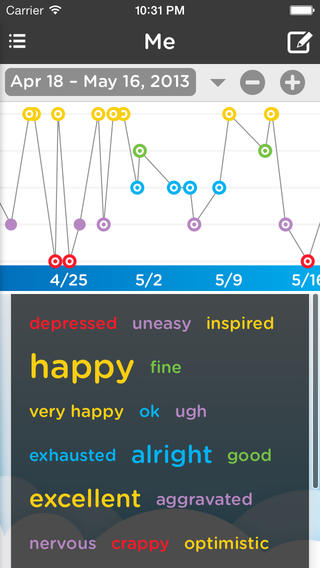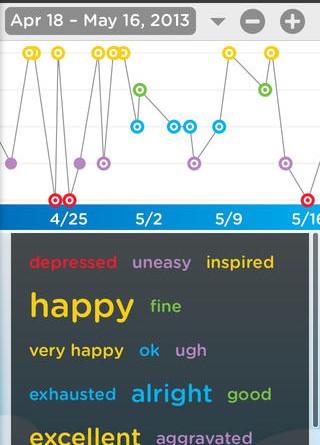Bipolar Disorder: 3 Tips for Making Mood Charts Work
With World Bipolar Day (March 30) upon us, I decided to blog about one of the most overlooked tools in managing bipolar disorder, mood charts. While they may not be for everyone, mood charts have been very effective in helping me reduce the intensity and frequency of depressive and hypomanic episodes. Mood charts can help people with bipolar disorder. People with bipolar II experience hypomania whereas people with bipolar I experience mania. This article by blogger, Natasha Tracy, explains the differences in greater detail. (And this article explains other kinds of bipolar diagnoses beyond I and II including cyclothymia, rapid cycling bipolar, and bipolar disorder -not otherwise specified.)
Bipolar Disorder: More Than “Mood Swings”
Contrary to popular belief, bipolar disorder, a chemical imbalance, is far more than mood swings, which everyone experiences at some point. A depressive episode can last anywhere from hours to weeks or months. During these episodes, it can feel hopeless like “life is always dark” and we’ve been depressed “forever.” Mood charts help me keep perspective. Also many people with bipolar go misdiagnosed for years because they are more likely to seek help in the midst of depression—not during a manic (or hyomanic episode) because the latter can feel good (at least temporarily). Charting moods can help psychiatrists spot bipolar disorder.
What Are Mood Charts?

3 Tips for Making Mood Charts Work:
- Look for patterns. Over time, you will observe patterns and see what triggers depression or mania. Triggers are events or things that precede episodes. I’ve noticed that when things get too hectic or I have too many deadlines, I experience depression. I also notice that my mood improves when I talk to friends regularly and exercise more—the latter activity releases endorphins, the “feel good hormones.” Deep depression follows days of 2 and 3 stars.
- Identify your triggers and create an “action plan.” I have a list of triggers ranging from mild, moderate, to severe. When these things happen, I know that I have to do something to prevent depression. I have an action plan. March was a very busy month for me. Knowing the effect hectic activity can have on me, I made more appointments with my therapist and I either said no or “not now” to people’s requests for favors. Develop an action plan. Be proactive about bipolar disorder—know what your triggers are and what actions you are going to take when they happen. Are you going to see your therapist? When things get bad, what friends can you talk to? What hobbies make you feel better? Bipolar disorder is unpredictable—mood charts can help us manage that unpredictability.
- Share your triggers with key people. I’m not suggesting you share your triggers, intimate information, with your coworkers or classmates. But we need to build support networks, friends and family, we can rely on to help us battle mental illness. If they know your triggers, they may notice when you’re entering depression or mania (or hypomania) before you do. They can learn how to be supportive. For instance, arguments affect me deeply. When I was younger, I would experience really intense depression when I “got in trouble” with my parents—usually for something trivial. Even though those events were rare, they affected me. Bipolar disorder makes me sensitive. I was diagnosed with Bipolar II at the age of 18 as a result of a chain reaction of events set off by a good friend’s suicide. When I explained the effect of such confrontations on my parents, my mom learned to adjust her language and behavior when she was upset.
–Your Stylist, Jessica Gimeno
Similar article: 5 Ways to Maintain Mental Health Despite Chronic Pain & Fatigue
Join us! Like Fashionably ill on Facebook: https://www.facebook.com/fashionablyill Meet other warriors.






Awesome tips!! Tracking our moods is such an important tool. It really helped me identify my triggers & action plans. I hope everyone battling mental health challenges will try tracking their moods with mood charts. Thank you so much for writing this blog post Jessica!